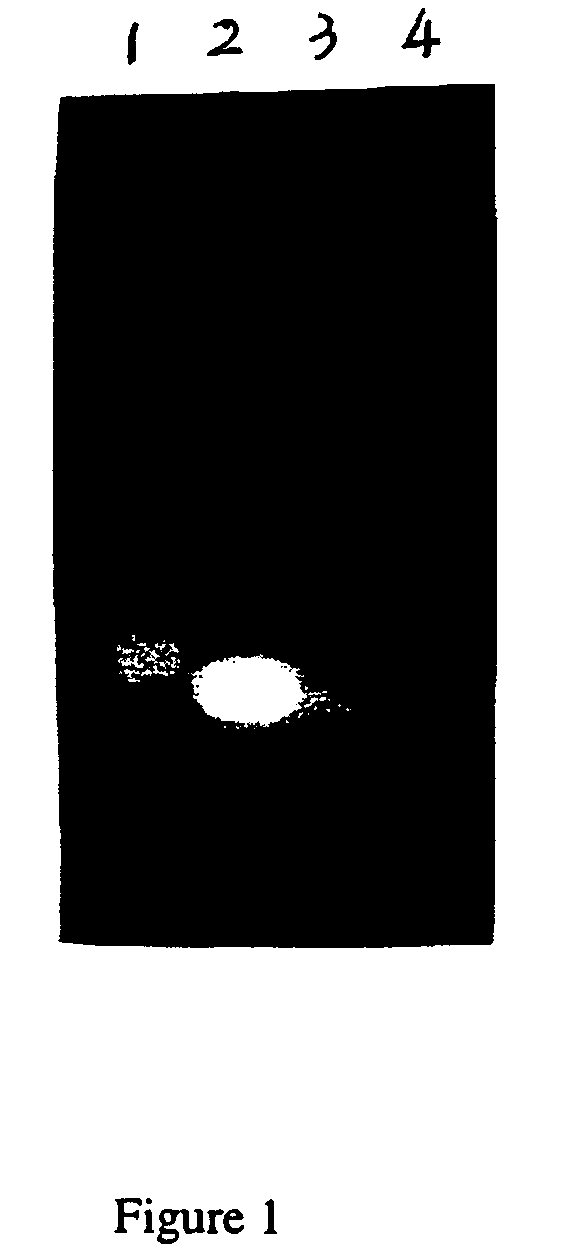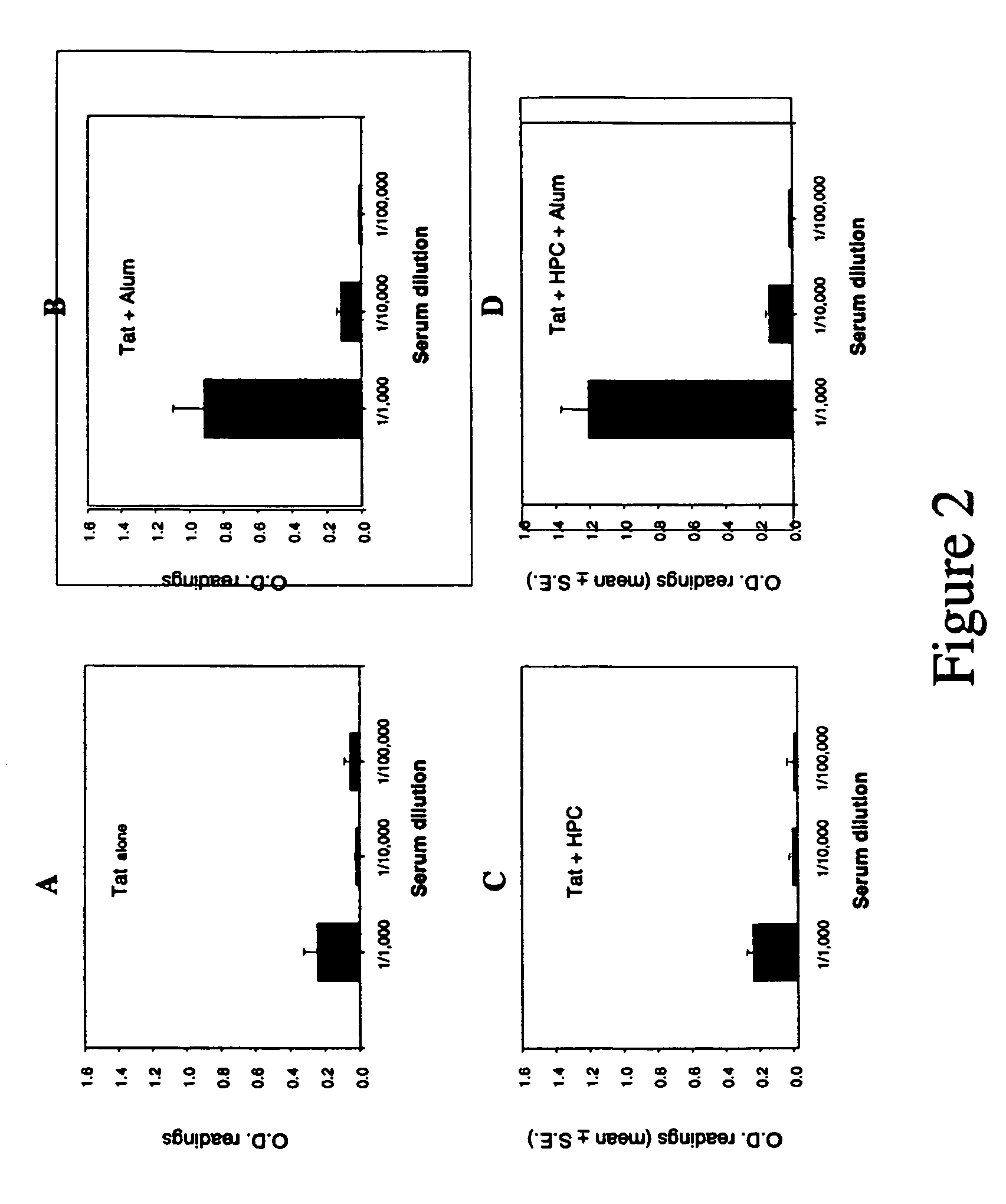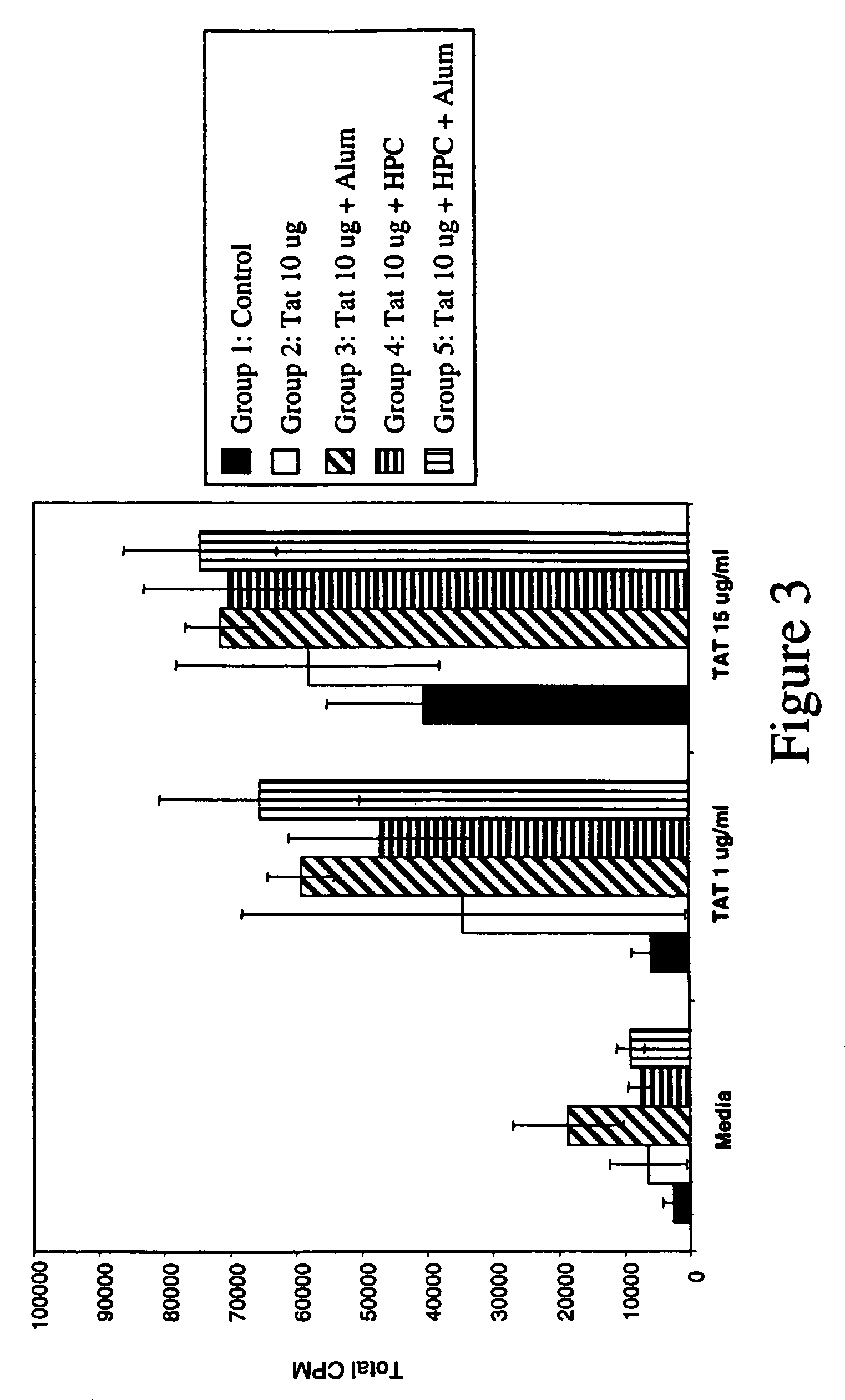Compositions comprising human immunodeficiency virus Tat adsorbed to the surface of anionic nanoparticles
a technology of anionic nanoparticles and immunodeficiency virus, which is applied in the field of compounds comprising human immunodeficiency virus tat adsorbed to the surface of anionic nanoparticles, can solve the problems of difficulty in developing an effective vaccine for immunoprophylaxis against hiv, the difficulty of detecting and treating hiv, and the inability to prevent aids
- Summary
- Abstract
- Description
- Claims
- Application Information
AI Technical Summary
Benefits of technology
Problems solved by technology
Method used
Image
Examples
example 1
Tat 1-72 Induces Humoral and Cell Mediated Responses
[0073]The present example is provided to demonstrate the effectiveness of Tat 1-72 as an immunogen.
[0074](a) To determine the immunogenicity of Tat 1-72, 4 groups each of 5 mice were immunized with 10 μg of purified Tat alone, Tat+Alum, Tat+HPC, or Tat+HPC+Alum. The mice were immunized subcutaneously at one-week intervals for three weeks. At the end of the fourth week, serum was collected from each animal, and antibody and T cell proliferative responses were assessed. Tat specific antibodies were detected by sandwich ELISA on Tat coated ELISA plates, and using rabbit-anti-mouse Ig secondary antibody. The results are shown in FIGS. 2(A)-(D).
[0075]Significant Tat-specific antibody responses were obtained in all four groups. The strongest response was induced in the two animal groups which had been immunized with Tat in combination with Alum or HPC+Alum. The antibody titre for both groups was 1:2000. Isotype-specific ELISA revealed a ...
example 2
Tat 1-72 does not Induce Immunosuppression In Vivo
[0080]The present example is provided to show the utility of Tat 1-72 as an immunogen, which does not induce immunosuppression.
[0081]The applicants used the in vivo D01 1. 10 TCR transgenic T cell adoptive transfer system to evaluate the effect of Tat 1-72 on the ability of D01 0. 11 T cells to undergo clonal expansion in vivo. OVA-specific DO 10.11 TCR transgenic T cells were transferred to normal BALB / c mice, and clonal expansion of the T cells was evaluated following administration of OVA in the presence or absence of Tat 1-72. D01 0.11 T cells, equivalent to 2.5×10 6 KJI 26, CD4+ cells, were transferred by intravenous administration into unirradiated BALB / c mice. Three days later, three groups of mice were given 200 μg OVA peptide 323-339, OVA 323-339 in combination with 10 μg Tat 1-72, or OVA 323-339 in combination with 10 μg Tat 1-86. The injections were repeated on two consecutive days. Axillary and inguinal lymph node cells w...
example 3
Preparation of Tat-Adsorbed Nanoparticles
[0083]The present example is provided to describe the preparation of Tat-adsorbed nanoparticles.
[0084]Nanoparticles were prepared as described above, having a particle size and zeta potential prior to protein binding of 105±11 nm and −65.1±2 mV, respectively, as shown on FIG. 6. Tat protein was adsorbed on the surface of the GPC purified anionic nanoparticles by gently mixing 25 μg / mL of Tat with 1 mL of GPC purified nanoparticles in 10% lactose. The Tat-adsorbed nanoparticles were then co-incubated with either phosphate-buffered saline (PBS, 10 mM, pH7.4), fetal bovine serum (10%, v / v) in normal saline, or 10% (w / v) lactose for 30 min at 37° C. The particle size stability was verified in several simulated biological media prior to incubation (white bars) and after incubation (black bars) as shown on FIG. 7.
PUM
| Property | Measurement | Unit |
|---|---|---|
| concentration | aaaaa | aaaaa |
| concentration | aaaaa | aaaaa |
| concentration | aaaaa | aaaaa |
Abstract
Description
Claims
Application Information
 Login to View More
Login to View More - R&D
- Intellectual Property
- Life Sciences
- Materials
- Tech Scout
- Unparalleled Data Quality
- Higher Quality Content
- 60% Fewer Hallucinations
Browse by: Latest US Patents, China's latest patents, Technical Efficacy Thesaurus, Application Domain, Technology Topic, Popular Technical Reports.
© 2025 PatSnap. All rights reserved.Legal|Privacy policy|Modern Slavery Act Transparency Statement|Sitemap|About US| Contact US: help@patsnap.com



